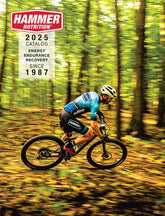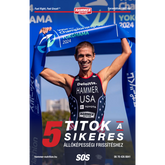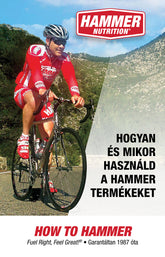The perils of loading
By Brian Frank
When you have a big event, competition, or adventure, do not attempt to load carbohydrates, water, or sodium.
Maintaining constant calorie, fluid, and sodium intake while simultaneously reducing expenditures in the taper phase leading up to your event allows you to “load” all of these things as much as possible.
Hopefully, you have read our fueling booklet, SOS: 5 Secrets of Success, and incorporated those practices immediately prior, during, and after your training and racing routine. But what do you do in the 72 hours prior to racing? Keep reading for the answers.
In the old days, athletes were erroneously told that consuming copious amounts of calories, fluid, and sodium during endurance events would allow them to achieve optimum performance. In the 80s, 400–600 calories, 40–60 ounces of fluids, and 1–3 grams of sodium per hour were recommended. Whenever exercise or competition went beyond three hours, stomach and GI problems were almost universal.
Today it’s rare to find anyone still advocating these crazy numbers, at least in the U.S. Europe and Asia are another story.
As you know if you have read our literature, we recommend hourly intakes of 120–180 calories, 20–25 oz of fluids, and 400–600 mg of salt (as part of a full-spectrum electrolyte replenishment product) as more reasonable and effective. We’ve been advocating this for three decades, and these numbers are now more or less the accepted wisdom.
Unfortunately, the myths regarding “loading” in the days leading up to a big, hot event are still surprisingly pervasive. So, let me dispel this one more time to help you avoid making these mistakes this year and beyond.
When it comes to fluids, drinking excess amounts only increases the risk of overly diluting blood levels of sodium and other electrolytic minerals.
That said, there is a way to maximize cellular fluid storage, and that’s via the glycerol component in Liquid Endurance. Glycerol is a naturally produced metabolite of fatty-acid oxidation, and it absorbs rapidly when taken with water or sports drinks, increasing the water content in blood, cells, and extracellular spaces. All three of these compartments contribute to sweat volume, resulting in a significant increase in cooling efficiency during prolonged exercise.
The key to maximizing—not over-supplying, but naturally maximizing—how much fluid the cells can hold is to use a specific amount of Liquid Endurance in a specific amount of water (ranging from 16–28 ounces) for a three-day period prior to a hot-weather workout or event. Follow product dosing instructions for best results.
When you have a big event, competition, or adventure, do not attempt to load carbohydrates, water, or sodium.
It does not work!
You have almost certainly heard experts and veteran athletes say you should “race like you train” and “never try something new on race day,” right? Evidently, most athletes don’t think this applies to the days leading up to the event too. I constantly see athletes massively changing their calorie, fluid, and sodium intake just before a big endurance event. These practices contradict the old adages and human physiology!Maintaining constant calorie, fluid, and sodium intake while simultaneously reducing expenditures in the taper phase leading up to your event allows you to “load” all of these things as much as possible.
Hopefully, you have read our fueling booklet, SOS: 5 Secrets of Success, and incorporated those practices immediately prior, during, and after your training and racing routine. But what do you do in the 72 hours prior to racing? Keep reading for the answers.
In the old days, athletes were erroneously told that consuming copious amounts of calories, fluid, and sodium during endurance events would allow them to achieve optimum performance. In the 80s, 400–600 calories, 40–60 ounces of fluids, and 1–3 grams of sodium per hour were recommended. Whenever exercise or competition went beyond three hours, stomach and GI problems were almost universal.
Today it’s rare to find anyone still advocating these crazy numbers, at least in the U.S. Europe and Asia are another story.
As you know if you have read our literature, we recommend hourly intakes of 120–180 calories, 20–25 oz of fluids, and 400–600 mg of salt (as part of a full-spectrum electrolyte replenishment product) as more reasonable and effective. We’ve been advocating this for three decades, and these numbers are now more or less the accepted wisdom.
Unfortunately, the myths regarding “loading” in the days leading up to a big, hot event are still surprisingly pervasive. So, let me dispel this one more time to help you avoid making these mistakes this year and beyond.
Carbs
We typically eat too much already. Increasing calorie intake during days of lower physical activity before an event only makes more work, fills your stomach and intestines, and likely leads to increased fat storage.Water
We are not camels and cannot store water. Suddenly increasing daily intake by more than 10% will overly dilute the electrolytes in your blood, which increases the potential for serious issues associated with hyponatremia. Additionally, all that unnecessary water will excessively fill your bladder, causing you to prematurely lose electrolytes courtesy of frequent elimination.Sodium
Again, we typically consume too much. Increasing it even more will not improve heat tolerance. In fact, it puts the body into survival mode where it seeks to jettison the excess to avoid toxicity. Whatever your normal daily sodium intake in the weeks prior to an event, keep it the same all the way up to race start. Then, from the start of the event, consume reasonable amounts throughout.When it comes to fluids, drinking excess amounts only increases the risk of overly diluting blood levels of sodium and other electrolytic minerals.
That said, there is a way to maximize cellular fluid storage, and that’s via the glycerol component in Liquid Endurance. Glycerol is a naturally produced metabolite of fatty-acid oxidation, and it absorbs rapidly when taken with water or sports drinks, increasing the water content in blood, cells, and extracellular spaces. All three of these compartments contribute to sweat volume, resulting in a significant increase in cooling efficiency during prolonged exercise.
The key to maximizing—not over-supplying, but naturally maximizing—how much fluid the cells can hold is to use a specific amount of Liquid Endurance in a specific amount of water (ranging from 16–28 ounces) for a three-day period prior to a hot-weather workout or event. Follow product dosing instructions for best results.











